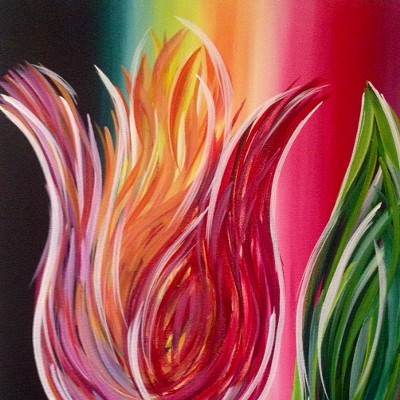True, Dinnerware Contemporary Art Gallery has been turned into Naked City for the duration of Drawing from the Figure--the exhibition offers up no fewer than 99 renditions of the mostly nude human body--but these pictures of too, too solid flesh are not entirely titillating. Painted, drawn and sculpted by the faculty and students of The Drawing Studio, a downtown art school, these artworks aspire to locate in the body a beauty more lyrical than lusty.
Their makers work from the live model, training in an artistic tradition at least as old as the Renaissance. No found objects or pop culture references or the other staples of contemporary art appear here, no questions about the nature of art. No, this show's artists are intent on capturing the timeless lines of the human figure, its interplay of shadow and light, its variable forms. And their teachers at the school have provided them with all the classic poses they need.
In these works, models recline on one side, the upper hip billowing upward in Henry Moore curves, as in Christine W. Dawdy's fine pastel "Emily." Or they lie on their backs, breasts and genitals splayed open for all to see. One of the best versions of this difficult view is "Reclining Female," a lovely pencil sketch by high school student Aurora Andrews. Women frolic in a circle, in joyful Matisse maneuvers, in "Friends That Dance," a lively ceramic piece by Solano, an artist who uses many colors but only one name.
Happily, this show is not just about female flesh. Singer-songwriter Kathy Budway delivers the classic buff man in her deft pastel "Craig," his muscles rippling across his powerful back, and Amber Van Hatala shatters Rodin's famous "Thinker," chin on fist, elbow on knee, in her cubist charcoal "I Could Morph into Anything." Stephen Harvey, Old Masterly with the conte crayon, has made two spare but breathtaking drawings. "Thursday Night Pose" is a full-body view of a man from the back, his arms raised over his head. Art school models frequently fall asleep, and Harvey's "My Favorite Model" is an exquisite drawing of a face softened by slumber.
As the works demonstrate, the human body is amazingly versatile, and the best artists and dancers (think Pilobolus) will always manage to twist the same basic equipment--head, torso, arms, legs--into riveting shapes. Still, it's inevitable that monotony will begin to creep in when 99 works are on the same subject, naked though they be.
This show is too big by half. The Drawing Studio had the good-hearted objective of showcasing as many artists as possible, but if organizers had tossed out 50 or so student-quality works they'd have had a stronger exhibition. Some of the drawings are overproduced, their amateur makers not yet realizing the virtues of simplicity. And some of the paintings by beginners make the beginner's standard mistakes: using paint right out of the tube and applying it flatly, leaving it in lifeless planes on the canvas.
Among all the earnest would-be Michelangelos, the school's more inventive--and doubtless more experienced--artists rebelled against the figure-drawing tradition. John Andrews amused himself by capturing the strange social environment of the art-school studio, where one person is nude and the others are clothed, and everyone pretends not to notice. His contour drawing "Bob with Kathy in the Background," in ink and charcoal, is a quick, deft study of both model and artist. And it makes an interesting dissection of the studio space, the model's horizontal mattress intersecting with an easel slicing diagonally across the paper.
Naughty Yoshi Nakamo put a huge nose on a seated male model, in a fluid sumi and charcoal sketch, and called him "A French Man," à la Cyrano de Bergerac--or Gérard Depardieu. Pat Marohn, a teacher at The Drawing Studio and former director of the Tubac Center for the Arts, turned in a big, bold and exaggerated reclining female, all graphic black lines in lithopencil and interestingly shaped white spaces.
M. Campione has made the most contemporary piece, a three-dimensional ceramic raku of the female torso. A refreshing bit of expressionism in a river of realism, "Below the Rillito #27" looks like twisted screen, pushed and punished into the generic shapes of breasts and vagina. Life drawing has its place, and it's a valuable one: The too many contemporary artists who can't draw would benefit from a little of this traditional training. But Campione's provocative piece reminds us how we got modern art in the first place. He's taking up the rebel artist's task, storming the barricades of convention, and leaping off into the unknown. In life drawing class, no less.














